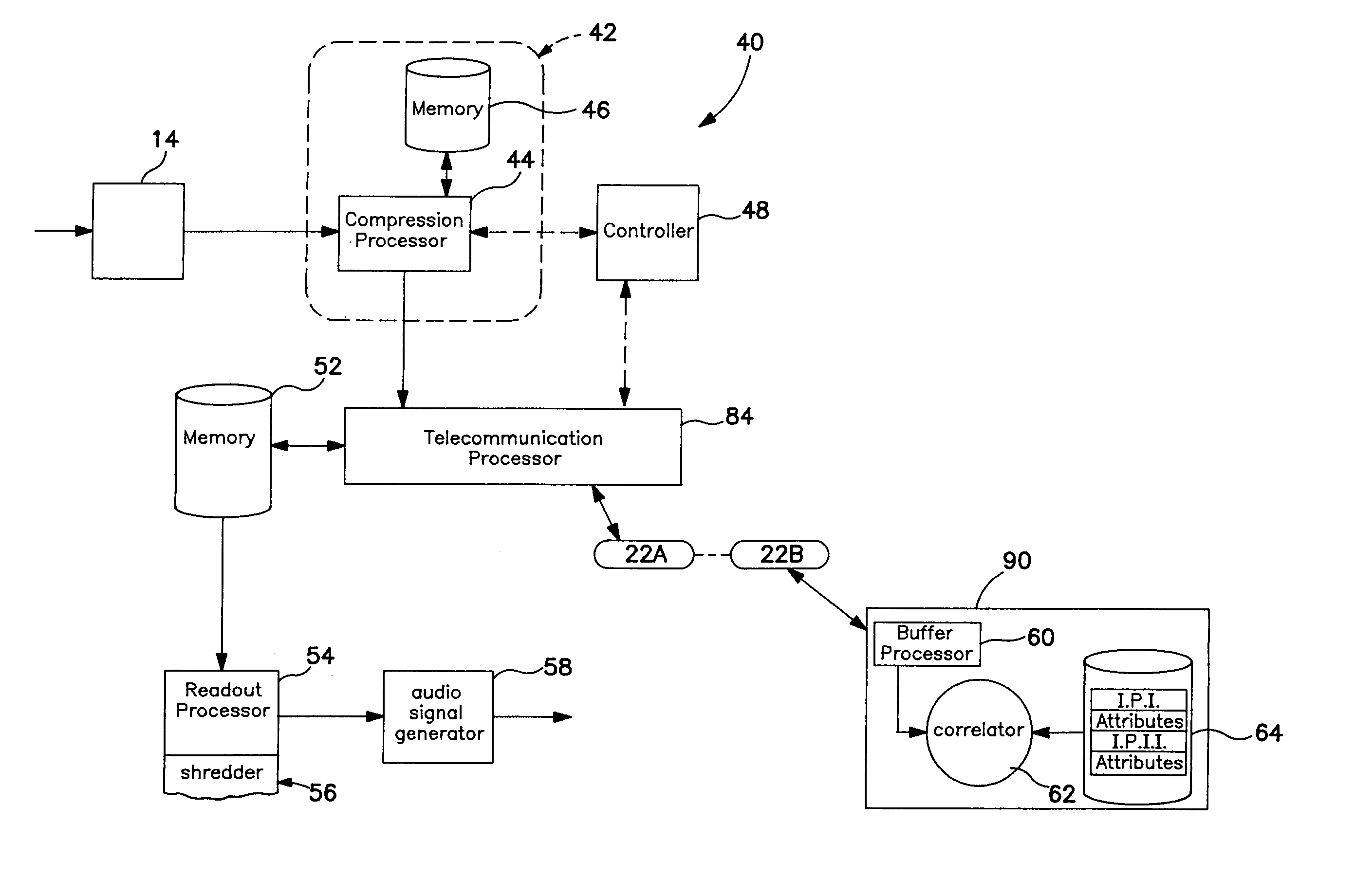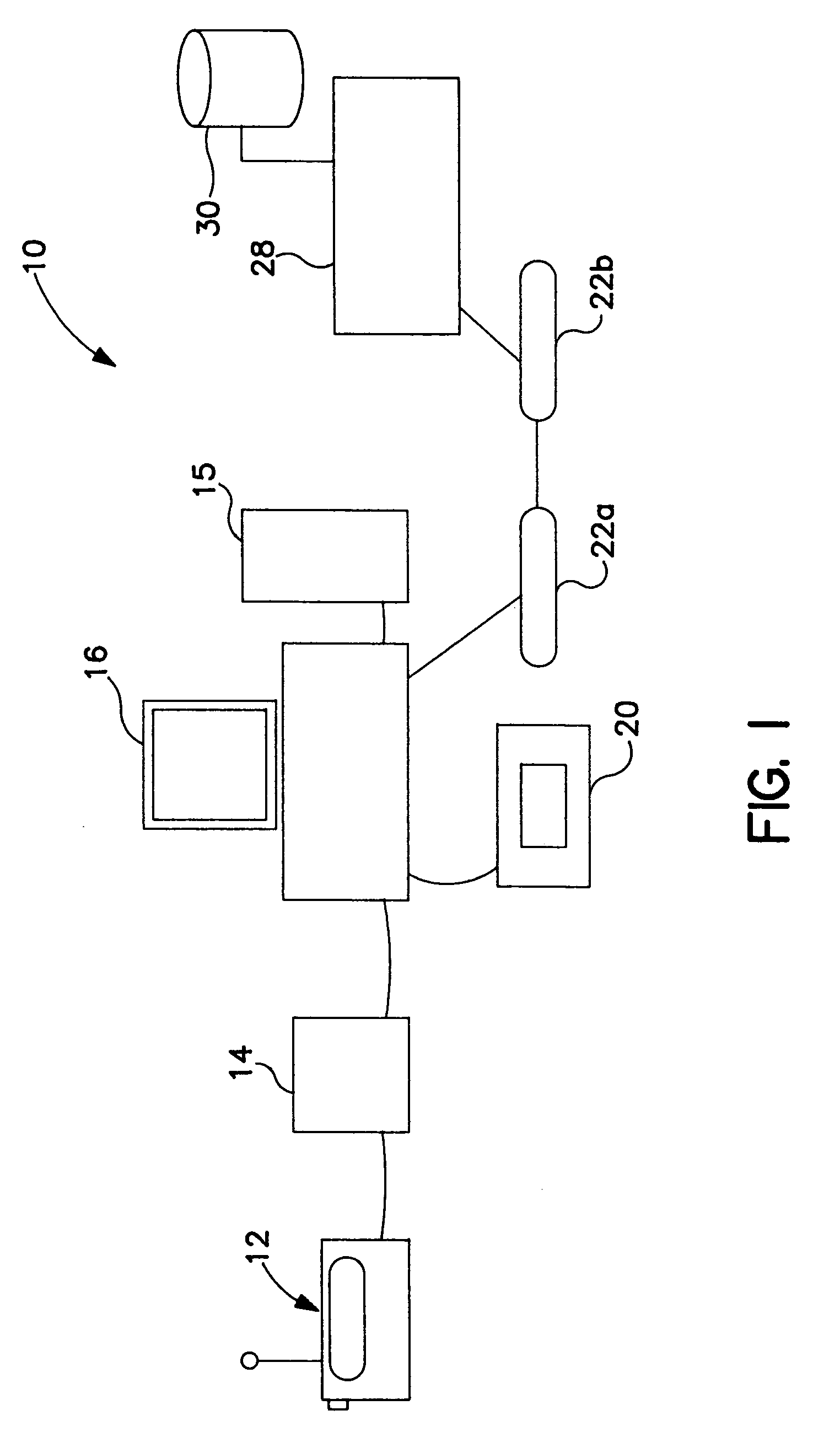Systems and methods for modifying broadcast programming
a technology of broadcast programming and processing methods, applied in the field of system and method processing of programming signals, can solve the problems of rarely being able to convince radio stations, recording studios without outlets to expose the general public, and lack of a ready method of exposing the general public to their products
- Summary
- Abstract
- Description
- Claims
- Application Information
AI Technical Summary
Benefits of technology
Problems solved by technology
Method used
Image
Examples
Embodiment Construction
[0026]FIG. 1 depicts a functional block diagram of one system for modifying broadcast signals according to the invention;
[0027]FIG. 2 depicts one embodiment of a system for identifying segments of a broadcast signal suitable for use with the system depicted in FIG. 1;
[0028]FIG. 3 depicts an alternative embodiment of a system for identifying segments and being practicable with the system depicted in FIG. 1;
[0029]FIG. 4 depicts an embodiment of the invention that includes a remote system for identifying segments of a broadcast signal;
[0030]FIG. 5 is a block diagram of a client-side program storage and playback device interconnected via a communications pathway to a remote server which recognizes snippets of programs received from the client-side unit and which returns descriptions of matching program segments, such as individual songs, to the play back unit; and
[0031]FIG. 6 is a block diagram of program storage and playback system including a mechanism for storing program content on b...
PUM
 Login to View More
Login to View More Abstract
Description
Claims
Application Information
 Login to View More
Login to View More - R&D
- Intellectual Property
- Life Sciences
- Materials
- Tech Scout
- Unparalleled Data Quality
- Higher Quality Content
- 60% Fewer Hallucinations
Browse by: Latest US Patents, China's latest patents, Technical Efficacy Thesaurus, Application Domain, Technology Topic, Popular Technical Reports.
© 2025 PatSnap. All rights reserved.Legal|Privacy policy|Modern Slavery Act Transparency Statement|Sitemap|About US| Contact US: help@patsnap.com



